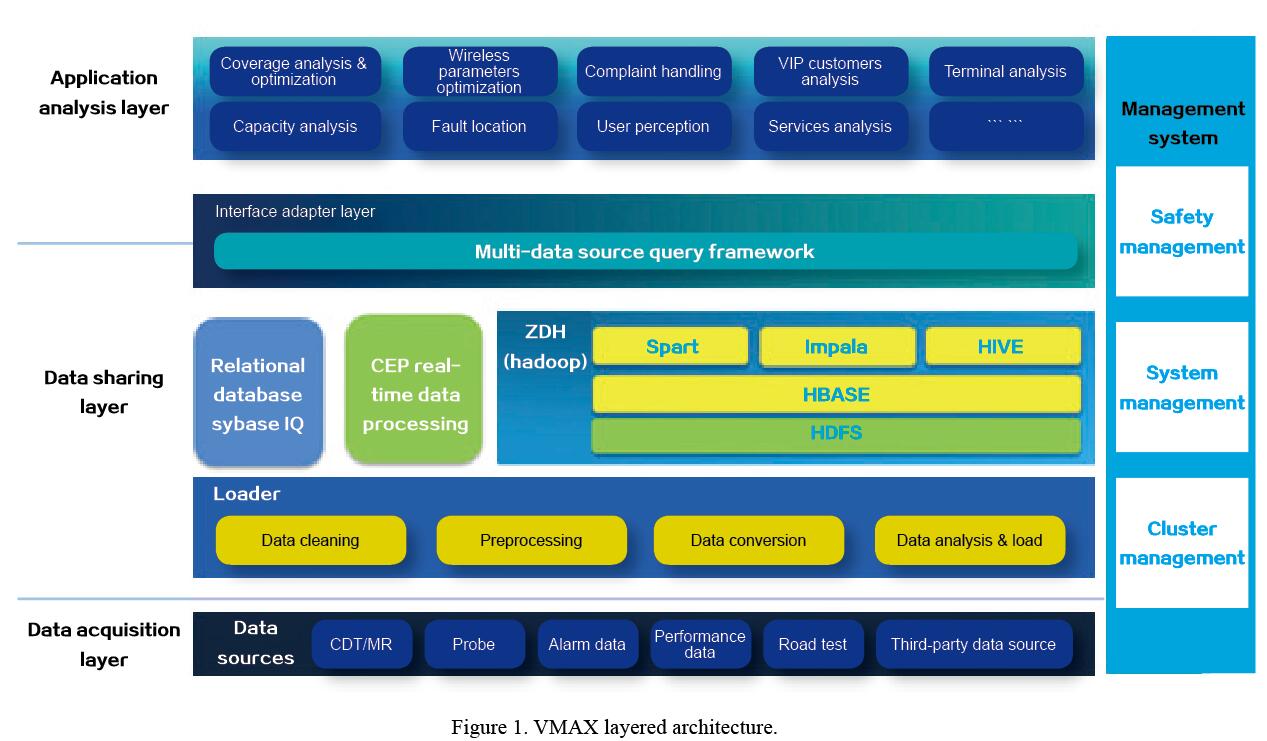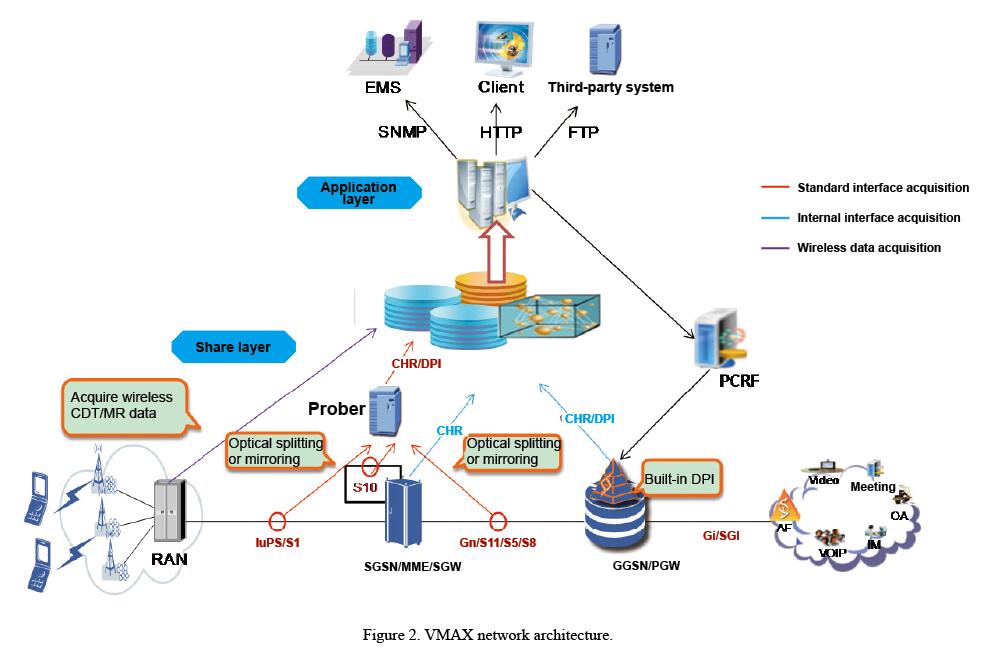VMAX for Optimal Network Operation
● Services are increasing while revenues are decreasing. Some low-value services occupy considerable bandwidth. If operators expand network capacity without optimizing or controlling network traffic, the benefits cannot match the costs.
● Complaints are rising. With the explosive growth of data services, the complaints continuously increase, and the need to rapidly locate a fault and handle data service complaints becomes increasingly urgent.
● Network content is invisible. Without the visualization of service contents, data service quality or user experience cannot be truly reflected. Operators are lack of valid and end-to-end methods to evaluate service quality and user.
● Operators are being relegated to dumb pipes. In the mobile internet era, operators are challenged by OTT providers. They need to optimal operate the data services to improve network values.
To attain a dominant position in the full-service operation era, operators must transit from extensive management to optimal management, optimize service quality, offer targeted and differentiated products, and improve user experience.
With deep understanding of the telecom industry and innovative thinking, ZTE launched value MAX (VMAX), which is a wireless big data solution. VMAX is a network O&M product based on big data technology. VMAX perceives and analyzes network and service information from the perspective of users. It visualizes network quality, service traffic, service quality, user experience, user behavior, and terminal application through mass data mining and analysis. It also supports end-to-end customer complaint handling and QoS analysis. In addition, it can quickly identify the causes that affect network quality and user perception, and build visual, manageable and controllable service pipes to achieve full-service optimal operation.
ZTE’s VMAX is used in various network O&M scenarios:
● End-to-end data service network optimization. With end-to-end network optimization analysis, VMAX can quickly discover the source and location of a problem. Moreover, it has a quality indicator system for mainstream services to support end-to-end analysis and real-time monitoring, and to understand the availability, time delay, traffic, bandwidth and packet loss of services, and the coverage and interference of the air interface. It enables data mining and analysis from top to bottom and from entire network to specific areas.
● User experience management. VMAX enables an operator to perceive users’ feelings, pay closer attention to users, and improve customer satisfaction. It has an end-to-end user perception system that involves analyzing QoS of specific users. In addition, it monitors user experience in real time, provides special care for VIP users, explores potential VAP users, and reminds operators to take measures to avoid customer churn.
● Support marketing. By building visual multi-dimensional pipes and mining data value, VMAX helps an operator with accurate marketing and network investment. It acquires popular services and applications in mobile networks to increase operating revenues and improve service experience. It also acquires user consumption habits, service preferences, and activity scenarios, providing a reference for precise terminal marketing. What’s more, it identifies valuable networks and makes suggestions for network development.
● Intelligent closed-loop control. VMAX can be connected with the PCC system to build a controllable service pipe that reduces network pressure, promotes traffic value, improves user experience and maximizes return on investment. In peak hours, VMAX ensures bandwidth for high-value services and VIP users. In idle hours, it increases user bandwidth and improve user experience.
● Industry-leading big data platform. By adopting multiple key technologies, the VMAX big-data platform is fast, accurate, and easy to use. Applications are decoupled from data, which avoids a situation where applications can access bottom-layer data. With a hybrid architecture, the big-data platform is technically open and divided into multiple layers and domains. MPP + Hadoop is used for platform construction, and multiple Hadoop 2.0 components are introduced. The real-time service capability realizes real-time data acquisition, real-time analysis, real-time service delivery, and self-adaptive learning of models and labels. The platform incorporates big data security into the unified security management system.
ZTE’s VMAX contains three layers: prober acquisition layer, data sharing layer, and analysis application layer. Each layer has open interface adapters to integrate multiple data sources, platforms, and applications.

VMAX allows internal interfaces to obtain control-plane and media-plane data from ZTE’s core network elements and to obtain MR/CDT data from the wireless side. By deploying probes and using optical splitters, external interfaces can acquire control-plane and media-plane data for the VMAX system from standard interfaces, such as Gn/IuPS/Gi/S1/S10/S11/S5/S8/SGi. The VMAX system can acquire, extract, associate, and analyze data from modules in the network to support network O&M.

Based on ZTE’s big-data technology, VMAX not only has powerful processing capacity but also flexible convergence ability. It can help operators build an optimal operation platform, which has already been deployed by many mainstream operators. For example, the VMAX big-data analysis system that was put into operation by Sichuan Telecom in March 2014 has done what it was designed to do in terms of user care, user behavior analysis, and user terminal analysis. It supports network construction planning by optimizing the networks and improving complaint handling efficiency. This system has been stably running for more than one year, bringing significant economic and social benefits. It also helps a lot to Sichuan Telecom’s optimal operation of province-wide wireless networks.